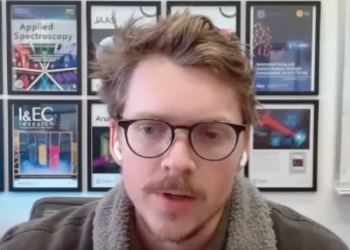
Near-Infrared Spectroscopy Enables High-Throughput Monitoring of Soil Elements
Chemometric modeling and near-infrared reflectance spectroscopy were successfully used to monitor the concentrations of eight elements in cultivated and fertilized Haplic Luvisol soils.
Scientists at the University of Silesia in Katowice, Poland, have successfully used near-infrared (NIR) reflectance spectroscopy combined with chemometric modeling to profile eight different elements in cultivated Haplic Luvisol soils. The study, published in the journal Talanta, illustrates the potential for using spectroscopic techniques in proximity sensing to replace time-consuming laboratory measurements and provide an automatic framework for high-throughput monitoring and precision agriculture (1).
The researchers built partial least-squares regression (PLSR) models to predict the concentrations of cadmium (Cd), copper (Cu), lead (Pb), nickel (Ni), chromium (Cr), zinc (Zn), manganese (Mn), and iron (Fe) in soil samples. A total of 234 soil samples were analyzed, and their reflectance spectra were recorded in the spectral range of 1100–2500 nm. The optimal spectral preprocessing was selected among 56 different scenarios, and the partial robust M-regression method (PRM) was used to handle the outlying samples.
PRM is a statistical approach used to handle outlying samples in chemometric modeling. It combines the benefits of partial least squares regression (PLSR) with the robust M-estimation method. PRM is used when the classical PLSR method is insufficient due to the presence of outlying samples, which can negatively affect model performance. PRM provides a more robust alternative to traditional PLSR, improving model prediction and reducing the impact of outlying data points on model accuracy.
The study found that the most promising PLS models were obtained for estimating the amount of Cu (using PRM) and Pb (using classic PLS), with coefficients of determination for validation samples of 0.86 and 0.58, respectively. The favorable PLS models were also built for Zn, Mn, and Fe with coefficients of determinations equal to 0.87, 0.87, and 0.79. The robust PLS modeling approach used in the study allowed for the reliable detection of these elements at very low concentrations.
The potential applications of spectroscopic techniques in proximity sensing for precision agriculture are vast. The ability to monitor soil elements in real-time using remote sensing technologies such as drones, airplanes, balloons, or satellites offers a promising research trend for efficient monitoring of large areas over extended periods of time. This approach cannot be achieved based solely on classic sampling and routine analytical procedures, making the combination of spectroscopic techniques and chemometric modeling a highly desirable alternative.
In conclusion, the study demonstrates that near-infrared reflectance spectroscopy extended with chemometric modeling is a highly reliable and efficient method for monitoring soil elements. The potential for remote sensing technologies to further enhance the capabilities of this method makes it an appealing option for precision agriculture and other applications that require high-throughput monitoring of soil elements.
Reference
(1) Krzebietke, S.; Daszykowski, M.; Czarnik-Matusewicz, H.; Stanimirova, I.; Pieszczek, L.; Sienkiewicz, S.; Wierbowska, J. Monitoring the concentrations of Cd, Cu, Pb, Ni, Cr, Zn, Mn and Fe in cultivated Haplic Luvisol soils using near-infrared reflectance spectroscopy and chemometrics. Talanta 2023, 251, 123749. DOI:
Newsletter
Get essential updates on the latest spectroscopy technologies, regulatory standards, and best practices—subscribe today to Spectroscopy.




